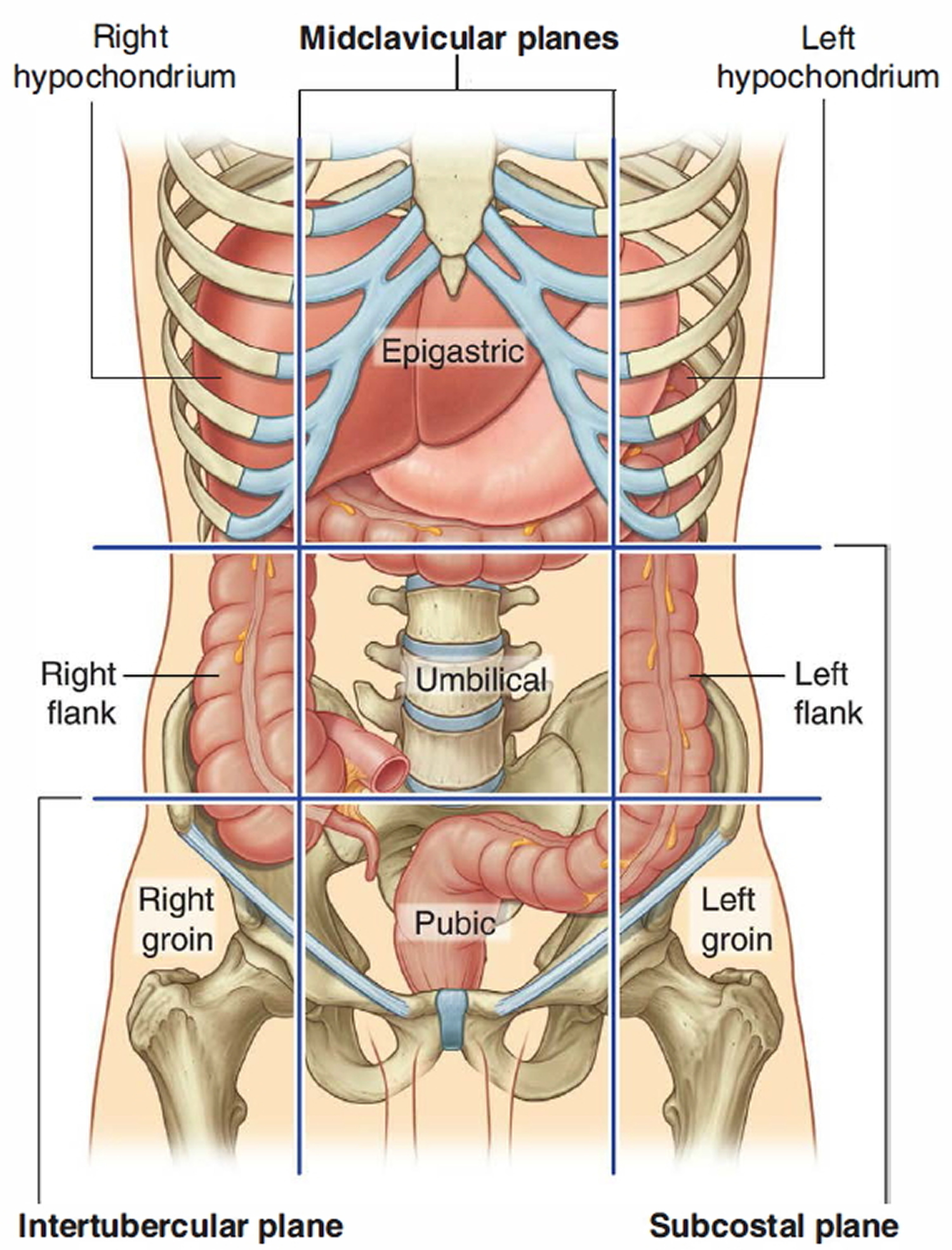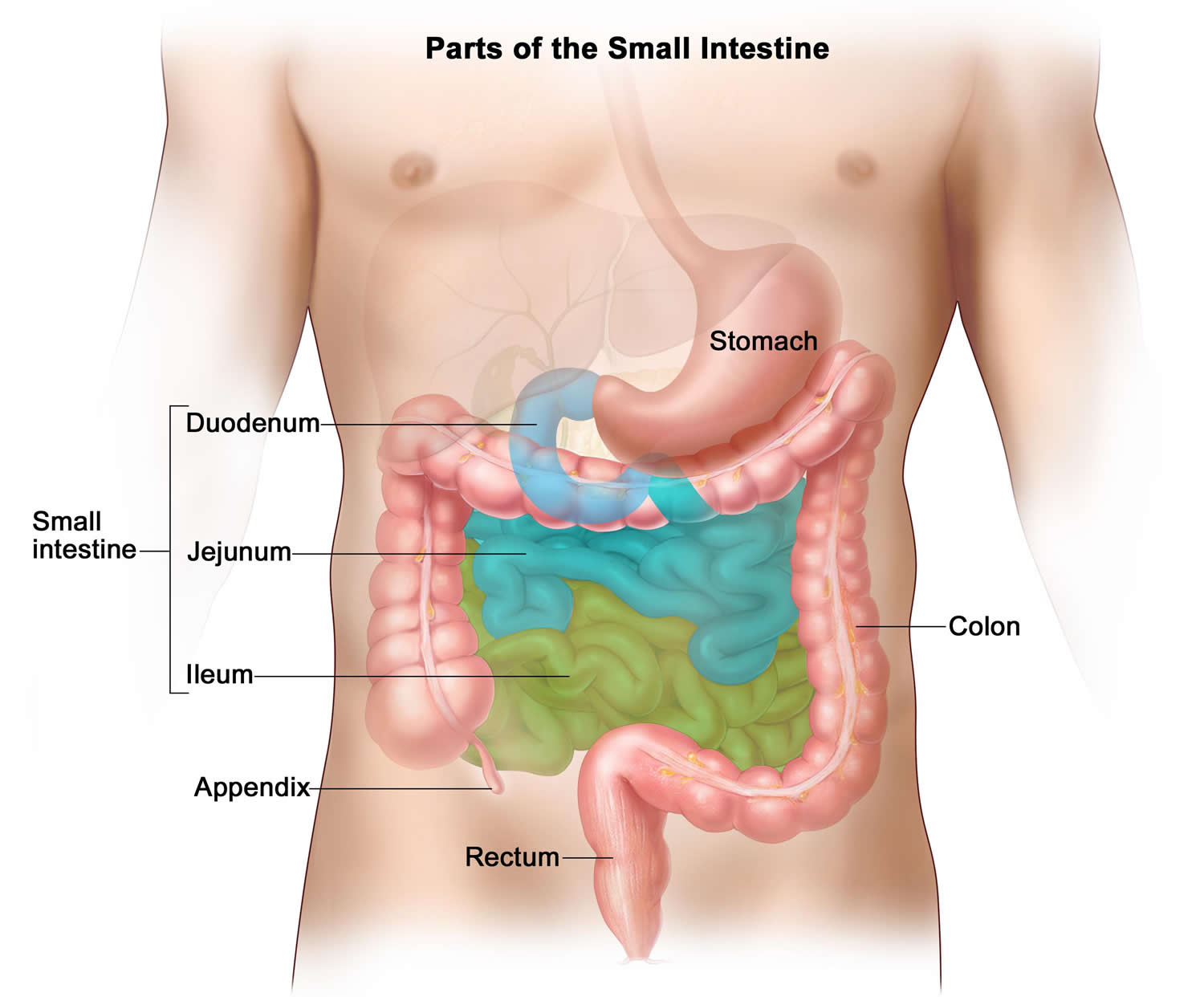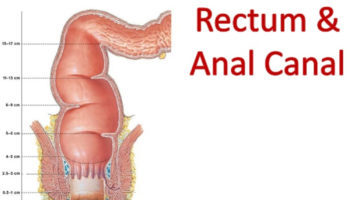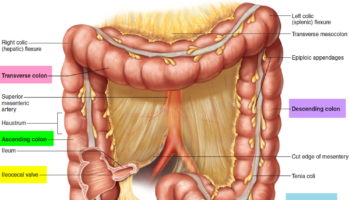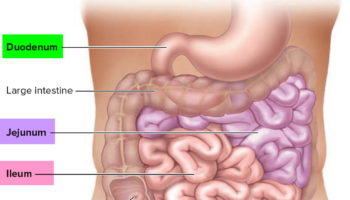Human appendix
The human appendix is a blind tube 2 to 7 cm long, that opens into the posteromedial wall of the cecum. Although almost always illustrated as hanging inferiorly, it more often lies “tucked up” behind to the cecum in the right iliac fossa (right groin region). The appendix has large masses of lymphoid tissue ( lymphocytes) in its wall. Commonly considered a vestigial (rudimentary) organ, current research proposes that the appendix functions as a safe haven for the beneficial bacteria that inhabit the large intestine. According to this theory, beneficial bacteria from the appendix can repopulate the gut following an infectious disease that causes diarrhea and flushes out the intestinal flora.
Figure 1. Appendix
Figure 2. Appendix location
Figure 3. Appendix in relation to large intestine and small intestine
Acute inflammation of the appendix, called appendicitis, results from a blockage that traps infectious bacteria within its lumen. The blockage often is caused by a lump of feces or by a virus-induced swelling of the lymphoid tissue of the appendix wall. Unable to empty its contents, the blocked appendix swells with the mucus it secretes, squeezing off its venous drainage and leading to ischemic necrosis and infection. If the appendix ruptures, bacteria and feces are released into the peritoneum, causing peritonitis. Because the symptoms of appendicitis vary greatly, this condition is notoriously difficult to diagnose. Often, however, the first symptom is pain in the umbilical region, followed by loss of appetite, fever, nausea, vomiting, and relocalization of pain to the lower right quadrant of the abdominal surface. Palpation of this region that causes strong pain after the pressure is removed (so-called rebound tenderness) can indicate appendicitis. Immediate surgical removal of the appendix, called appendectomy, is the usual treatment.


